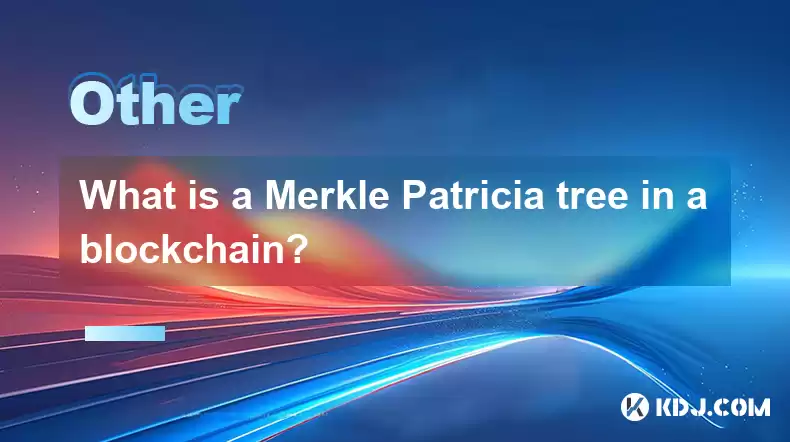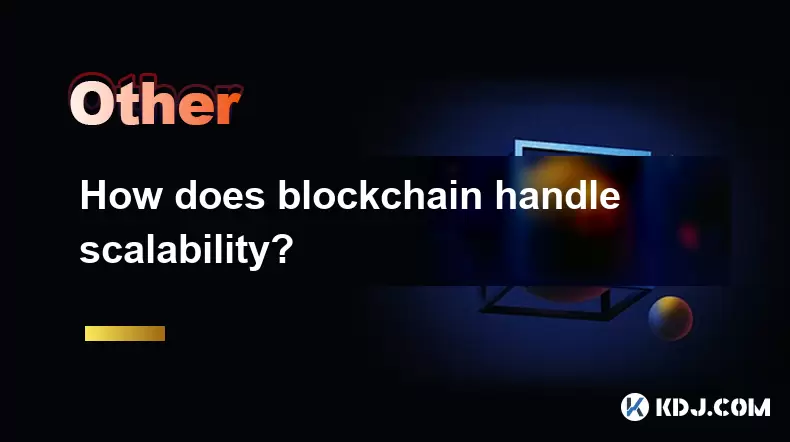-
 Bitcoin
Bitcoin $112400
-1.07% -
 Ethereum
Ethereum $3409
-3.27% -
 XRP
XRP $2.784
-6.60% -
 Tether USDt
Tether USDt $0.9997
-0.03% -
 BNB
BNB $739.3
-2.09% -
 Solana
Solana $158.0
-2.90% -
 USDC
USDC $0.9998
-0.02% -
 TRON
TRON $0.3213
-0.94% -
 Dogecoin
Dogecoin $0.1929
-5.01% -
 Cardano
Cardano $0.6974
-2.82% -
 Hyperliquid
Hyperliquid $36.69
-2.31% -
 Sui
Sui $3.327
-4.80% -
 Stellar
Stellar $0.3672
-5.18% -
 Chainlink
Chainlink $15.65
-3.07% -
 Bitcoin Cash
Bitcoin Cash $525.0
-1.68% -
 Hedera
Hedera $0.2291
-6.00% -
 Avalanche
Avalanche $20.91
-2.96% -
 Ethena USDe
Ethena USDe $1.000
0.00% -
 Toncoin
Toncoin $3.520
-1.12% -
 UNUS SED LEO
UNUS SED LEO $8.968
0.14% -
 Litecoin
Litecoin $105.7
0.26% -
 Shiba Inu
Shiba Inu $0.00001181
-1.79% -
 Polkadot
Polkadot $3.492
-2.08% -
 Uniswap
Uniswap $8.800
-3.10% -
 Dai
Dai $0.9999
-0.01% -
 Monero
Monero $289.9
-3.17% -
 Bitget Token
Bitget Token $4.243
-1.27% -
 Pepe
Pepe $0.00001006
-3.67% -
 Cronos
Cronos $0.1248
-5.68% -
 Aave
Aave $249.7
-2.50%
What is a Merkle Patricia tree in a blockchain?
Merkle Patricia trees combine Merkle and Patricia trees, crucial for blockchain's efficient data management and verification, especially in Ethereum.
Apr 15, 2025 at 07:21 am

A Merkle Patricia tree is a data structure that combines the properties of Merkle trees and Patricia trees, playing a crucial role in blockchain technologies, particularly in Ethereum. This article delves into the specifics of what a Merkle Patricia tree is, how it functions, and its significance within a blockchain system.
Understanding the Basics of Merkle Patricia Trees
A Merkle Patricia tree is a hybrid data structure that merges the features of both Merkle trees and Patricia trees. Merkle trees are used for efficiently and securely verifying the contents of large data structures, while Patricia trees are a type of trie, or prefix tree, used for organizing and storing data in a way that allows for quick retrieval. In the context of blockchain, this combination is particularly useful for managing and verifying large amounts of data in a secure and efficient manner.
The Structure of a Merkle Patricia Tree
The structure of a Merkle Patricia tree can be broken down into several key components:
- Nodes: The tree consists of various types of nodes, including leaf nodes, extension nodes, and branch nodes. Each node contains a hash that represents its state.
- Leaf Nodes: These nodes store the actual data or key-value pairs at the end of the tree.
- Extension Nodes: These nodes are used to compress paths in the tree, reducing the overall size and improving efficiency.
- Branch Nodes: These nodes have up to 16 children, representing the hexadecimal digits (0-9, a-f), and are used to navigate through the tree.
The combination of these nodes forms a tree structure that is both efficient and secure, allowing for quick data retrieval and verification.
How Merkle Patricia Trees Work in Blockchain
In a blockchain, Merkle Patricia trees are used to organize and verify the state of the blockchain. Here's how they function:
- State Trie: Ethereum uses a Merkle Patricia tree to manage the state of accounts, balances, and smart contracts. Each account is represented by a leaf node, and the state of the entire blockchain is represented by the root hash of the tree.
- Transaction Trie: Similarly, transactions within a block are organized into a Merkle Patricia tree, allowing for efficient verification of transactions.
- Receipt Trie: The results of transactions, or receipts, are also organized into a Merkle Patricia tree, ensuring that the outcomes of transactions can be verified.
By using these trees, blockchain networks can efficiently verify the integrity of the data without needing to download and process the entire blockchain.
Benefits of Using Merkle Patricia Trees in Blockchain
The use of Merkle Patricia trees in blockchain offers several significant benefits:
- Efficiency: The tree structure allows for quick data retrieval and verification, reducing the computational resources required.
- Security: The use of cryptographic hashes ensures that any changes to the data will be immediately detectable, enhancing the security of the blockchain.
- Scalability: By allowing for the efficient verification of large data sets, Merkle Patricia trees help improve the scalability of blockchain networks.
These benefits make Merkle Patricia trees an essential component of modern blockchain systems, particularly in platforms like Ethereum.
Practical Implementation of Merkle Patricia Trees
To understand how Merkle Patricia trees are implemented in practice, let's consider a simple example of creating and verifying a state trie in Ethereum:
- Create the State Trie: Start by initializing an empty Merkle Patricia tree. As accounts are added or updated, new nodes are created and inserted into the tree.
- For each account, calculate its hash and insert it as a leaf node.
- Update the tree structure accordingly, creating extension and branch nodes as needed.
- Update the State Trie: When an account's state changes, update the corresponding leaf node and recalculate the hashes up to the root.
- This ensures that the root hash of the tree accurately reflects the current state of the blockchain.
- Verify the State Trie: To verify the state of an account, start from the root hash and navigate down the tree to the relevant leaf node.
- Compare the hash of the leaf node with the expected hash to ensure data integrity.
This process ensures that the state of the blockchain can be efficiently and securely verified at any time.
Merkle Patricia Trees in Ethereum
Ethereum heavily relies on Merkle Patricia trees for its state management. Here's a closer look at how Ethereum utilizes these trees:
- Account State: Each account in Ethereum is represented by a leaf node in the state trie. The state of an account includes its balance, nonce, code hash, and storage root.
- Storage Trie: Each account's storage is managed by a separate Merkle Patricia tree, known as the storage trie. This allows for efficient management and verification of an account's storage data.
- Block Headers: The root hash of the state trie is included in the block header, allowing for quick verification of the entire state of the blockchain.
By integrating Merkle Patricia trees into its architecture, Ethereum achieves a high level of efficiency and security in managing its state.
Frequently Asked Questions
Q: Can Merkle Patricia trees be used in other blockchain platforms besides Ethereum?
A: Yes, while Ethereum is the most prominent example of using Merkle Patricia trees, other blockchain platforms can also benefit from this data structure. Any blockchain that requires efficient and secure state management can potentially use Merkle Patricia trees.
Q: How do Merkle Patricia trees handle conflicts or collisions?
A: Merkle Patricia trees use cryptographic hashes to minimize the likelihood of collisions. In the rare event of a collision, the tree structure can be adjusted to accommodate the conflicting data, ensuring the integrity of the tree.
Q: What happens if a node in the Merkle Patricia tree is corrupted?
A: If a node is corrupted, the cryptographic hash of the node will change, which will be detected when verifying the tree. The blockchain network can then take appropriate action, such as rejecting the corrupted data or initiating a repair process.
Q: How does the size of a Merkle Patricia tree affect its performance?
A: The size of the tree can impact performance, as larger trees require more computational resources for traversal and verification. However, the use of extension nodes and efficient hashing algorithms helps mitigate these effects, maintaining good performance even with large datasets.
Disclaimer:info@kdj.com
The information provided is not trading advice. kdj.com does not assume any responsibility for any investments made based on the information provided in this article. Cryptocurrencies are highly volatile and it is highly recommended that you invest with caution after thorough research!
If you believe that the content used on this website infringes your copyright, please contact us immediately (info@kdj.com) and we will delete it promptly.
- BlockDAG, SEI, Ethena: Top Crypto Performers Under the Microscope
- 2025-08-03 10:50:16
- Bitcoin Blasts Past $119K: How Institutional Adoption and Macro Shifts Fuel the Fire
- 2025-08-03 10:55:16
- Crypto, Grok, and August: Decoding the Latest Trends and Insights
- 2025-08-03 11:10:16
- Crypto, Phishing, and Your Wallet: A New Yorker's Guide to Staying Safe
- 2025-08-03 10:30:16
- Troller Cat Meme Coin Presale Soars: A New King in the Crypto Jungle?
- 2025-08-03 10:30:16
- Grayscale, Altcoin Trust, and Mid-Cap Mania: What's the Deal?
- 2025-08-03 08:50:16
Related knowledge

What is the difference between on-chain and off-chain transactions?
Aug 02,2025 at 04:22pm
Understanding On-Chain TransactionsOn-chain transactions refer to digital asset transfers that are recorded directly on a blockchain ledger. These tra...

What is the double-spending problem and how does blockchain prevent it?
Aug 02,2025 at 01:07pm
Understanding the Double-Spending ProblemThe double-spending problem is a fundamental challenge in digital currency systems where the same digital tok...

What is the difference between a blockchain and a database?
Aug 01,2025 at 09:36pm
Understanding the Core Structure of a BlockchainA blockchain is a decentralized digital ledger that records data in a series of immutable blocks linke...

How does blockchain handle scalability?
Aug 02,2025 at 02:58pm
Understanding Blockchain Scalability ChallengesBlockchain scalability refers to a network's ability to handle an increasing volume of transactions wit...

What are the different types of blockchains?
Aug 03,2025 at 03:01am
Public Blockchains: Open and Decentralized NetworksPublic blockchains are the most widely recognized type of blockchain, characterized by their open a...

What is a hash in a blockchain?
Aug 02,2025 at 05:28am
Understanding the Concept of Hash in BlockchainA hash in the context of blockchain technology refers to a unique digital fingerprint generated by a cr...

What is the difference between on-chain and off-chain transactions?
Aug 02,2025 at 04:22pm
Understanding On-Chain TransactionsOn-chain transactions refer to digital asset transfers that are recorded directly on a blockchain ledger. These tra...

What is the double-spending problem and how does blockchain prevent it?
Aug 02,2025 at 01:07pm
Understanding the Double-Spending ProblemThe double-spending problem is a fundamental challenge in digital currency systems where the same digital tok...

What is the difference between a blockchain and a database?
Aug 01,2025 at 09:36pm
Understanding the Core Structure of a BlockchainA blockchain is a decentralized digital ledger that records data in a series of immutable blocks linke...

How does blockchain handle scalability?
Aug 02,2025 at 02:58pm
Understanding Blockchain Scalability ChallengesBlockchain scalability refers to a network's ability to handle an increasing volume of transactions wit...

What are the different types of blockchains?
Aug 03,2025 at 03:01am
Public Blockchains: Open and Decentralized NetworksPublic blockchains are the most widely recognized type of blockchain, characterized by their open a...

What is a hash in a blockchain?
Aug 02,2025 at 05:28am
Understanding the Concept of Hash in BlockchainA hash in the context of blockchain technology refers to a unique digital fingerprint generated by a cr...
See all articles

























































































